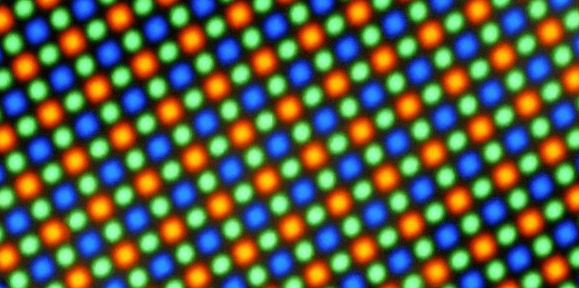AMOLED – Active Matrix Organic Light Emitting Diode are the next generation displays. Most Samsung devices like latest Samsung Galaxy Tab use this type of panel:
-
- Overview:
Couple of years ago there were so many LCD mobile phones produced by cellphone manufacturers like Nokia 5300, N73, N76, Sony Ericsson‘s W580, Apple iPhone 4 etc. But now most of the cell phone manufacturers are using AMOLED in their devices because of some advantages over the LCD/TFT display types. How this amazing color of the AMOLED technology is used to make graphics pop in games, movies, and general use case scenarios. This type of OLED screen is simply amazing for games due to the amazing color gamut as well as the fast response times making games smooth. We recommend you try some interesting casino games with this type of panel, we also recommend you give this casino bonus guide at RealMoneyUS a quick read. This will teach you how to utilize bonuses and a few other tricks that might come in handy when playing at an online casino. Now let’s enjoy a full comparison between these panels.
-
- Description:
My phone factor blog about Light Emitting Diode (LED) which creates light when an electricity is applied to it. In the similar way even the OLED also does along with some extra ordinary features. OLED is made up of organic or carbon based materials. This material is composed of thin multi-layered films like Hole Transporting Layer (HTL), Emission Layer (EML) & Electron Transporting Layer (ETL). So by applying the appropriate voltage to the two terminals i.e, Cathode (Negative) & Anode (positive) the electrons and holes combine together inside the EML to form excitation after which the Electroluminescence occur hence emitting the light.
There are several kinds of OLED’s like
– Passive Matrix OLED (PMOLED) used as the display in the Mp3 players
– Active Matrix OLED (AMOLED) used as the display in the smartphones
– Transparent OLED used as heads up display in automobiles, fighter planes. It means the driver/pilot can see the view and the display at a time on the glass
– Top-Emitting OLED can be used in the smart cards
– White OLED used as fluorescent lamps in homes, buildings.
AMOLED consists of the OLED pixels that are integrated on the Thin Film Transistor (TFT). Pixel is a smallest unit of an image. In AMOLED this pixel is switched on by the TFT when there is a white image and it is switched off when there is a black image. AMOLED doesn’t require a backlight for display as compared to the LCD. Based on the AMOLED technology Google has come up with a new search engine specially designed for the low power consumption called as Black Google Mobile. Using this search engine saves your battery. You can see the difference in the display’s quality by watching any video online, movie, or TV show. Better yet, why not try playing a game? Choose your favorite, or if you are a gambling game lover, visit the casino site vision-games.com and select one from their extensive list of games. This is a sure way to test the capabilities and limits of the new AMOLED display.
-
- Advantages of AMOLED:
1. Fast Response Time. It means a full motion graphics can be displayed. For ex, a moving vehicle can be displayed neatly without any blur.
2. Wide Viewing Angle. It means a person can view the screen clearly at an angle of 60 degree.
3. AMOLED’s power consumption is based on the background image, content & application. For a black background the power consumption is very less and for a white its more than the TFT/LCD screen. Technically the LED’s in the display are switched off in the black background hence consuming less power and switched on in the white background leading to more power consumption from the battery. So use black background to minimize the power consumption.
4. Ultra thin and Light weighted.
5. Wide operating temperature range (-40degree to 80degree) compared to the TFT/LCD (-20degree to 70degree).
6. High Contrast Ratio makes the image feel Brighter.
-
- Disadvantages of AMOLED:
1. Reflective in the day light.
2. Costlier then the traditional TFT/LCD.
3. Lifespan less compared to the LCD, maybe couple of years. Some pixels may stop working due to the internal heat dissipation (burn-in) in the screen hence displaying an unclear images. Anyways a lifespan requirement is probably less needed in case of a mobile handsets.
4. Image Sticking problem. For Ex, consider a chess board is displayed on the screen for some time and immediately if the screen is switched to a white background then the Black images of the chess board can be seen as gray in color in the white background screen. This kind of affect is usually called as “Ghosting” affect.
-
- AMOLED’s Applications:
AMOLED display are manufactured by the companies like – Samsung Mobile Display, LG display, Kodak etc for Smartphones, TV, Digital Cameras, Mp3 Players and Tablets. Currently the AMOLED is used in the Android smartphones like Samsung Galaxy S II, Nexus S, HTC, Nokia.



